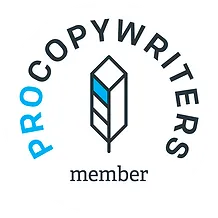This is Swiped. It’s a series of posts that’s like a swipe file, but with some insight into why I like particular things.
For the first post, we’ll be looking at one of the content marketing greats – Copyblogger. Whether you agree with what they say and the processes they recommend, it’s undeniable that their website features some great copy that’s tailored to the right audience.
But Swiped doesn’t look at generalisations. This isn’t an expansive post, but a precise one that focuses on one aspect of copywriting.
This time, it’s something that I’ll call inverted emphasis.
Website Copywriting is Formatting Too
Before we get to Copyblogger, it’s worth pointing out that copy isn’t just about words.
A copywriter writes, but sometimes there are other considerations that should be taken into account. It’s no good writing if you can’t get people to read.
When it comes to website copywriting, most copywriters understand the importance of formatting. Whether the responsibility falls to the designer or the copywriter is irrelevant – the way words are presented on the page changes how they are read. That makes it our business to care.
Back in 2006, Jakob Neilsen conducted an eye tracking study that told us how the average person reads online copy. Basically, we’re looking at an F shape – a couple of horizontal glances across the top, and then a more casual ‘skim’ down the left hand side.
The study also showed that this downward skim of a page can be incredibly fast, more of a glance than anything else.
When readers are glancing, we need to find a way to catch their attention and make them stop.
Bold and Italics – The Tools of Emphasis
I hate stating the obvious, so I’ll keep this brief.
Bold and italics are the standards of emphasising copy online. As people glance, their eyes are naturally drawn to text that looks a bit different to the main body.
But it’s worth remembering that, although some copywriters use both, italics are a much disputed thing.
You see, many web fonts don’t come with their own italicised format. Instead, they use oblique text, slanted at an angle but not redesigned for readability.
Some typographers would suggest that italics are harder to read, particularly when you put lots of them together, and the letters become bunched up. Other people would debate this, claiming that modern italicised fonts are just as legible as any other styling.
I think one thing’s for sure – they’re harder to read than bold text.
What I like about the Copyblogger homepage is how it puts this to work.
Inverting Emphasis for Higher Impact Copywriting
Usually, italics are used to add emphasis. But, in the great battle for your attention, they can’t beat bold.
In the header above (which is taken from the Copyblogger homepage) italics are used on the most useless word in the sentence. The most unimportant part. Doesn’t that go against everything we know about adding emphasis?
No. I think it creates emphasis, just not where you’d expect.
The subtitle – “Tools and Training for Smarter Content Marketing” is written in title case, with the most important words capitalised. It’s also bold.
So when the word “for” is italicised and written in a normal font weight, the bold effect is exaggerated. The contrast increases.
The important parts become more attention grabbing.
Putting Inverted Emphasis to Work
So how can this simple observation be used in copywriting more generally?
First, it’s worth noting that if we’re italicising the unimportant words (not capitalised in title case), “and” should be treated the same.
Let’s try that:
Tools and Training for Smarter Content Marketing
It works, but somehow loses something. The line balance between “Tools and Training” and “Smarter Content Marketing” is disrupted. Maybe it’s too much of a good technique.
But you could also write a longer sentence where your benefits and selling points got a little extra emphasis.
That’s just using bold and italics. How about attempting a similar effect using colour?
Important Heading where Colour Matters.
You make one unimportant part of your copy harder to read, and everything else gets a little more “pop”.
A freelance copywriter should always be looking for ways to draw readers’ attention to certain spots on a page. I’ll be keeping this one in mind.

